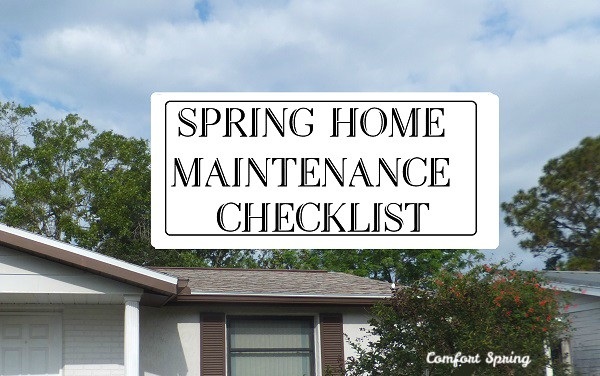
Real estate management refers to the operation and maintenance, acquisition, and operation of real properties. This applies to both commercial and residential real estate properties. It includes equipment, workforce, and capital assets.
Property management is a complicated business. To begin with, a property manager must know the local rental market, and be able to understand the tenant's needs. They may also have responsibilities related to marketing, maintenance and conflict resolution. In addition, they must be familiar with federal statutes and apply them to their business.
Property management can be provided by professional firms. Most states require that property managers must be licensed. These property managers are usually licensed salespeople or realtors. These professionals include developers, appraisers and bankers.
The typical property management service covers cost budgeting, tenant placement and advertising and marketing. The company can provide financials, advice about tax deductions, as well as recommendations for long-term plans. Many times, financial statements are provided on a quarterly and yearly basis by these companies.

Good property management companies can help you save time and money. They can manage multiple properties at the same time and they can help tenants. These companies can respond quickly to tenant queries. Some also offer repair services.
You will need to pay a management fee if you are working with a professional real estate manager. This is typically 8% to 10% of the rental amount. The fee can be waived if you have not signed a contract. Some companies also charge a set-up fee and a fee for letting tenancy.
Property managers, unlike traditional landlords will keep an eye on repairs and maintenance. A property manager can also suggest marketing programs. This allows them to increase profits all year.
One of the biggest drivers for property managers is the influx of tenant maintenance calls. Landlords who manage their own rental properties may not have the time or ability to handle tenant issues. It's crucial to hire a property manager.
Property managers have a deep understanding of the industry and can manage multiple properties simultaneously. They can also provide detailed accounting reports. They can also give owners reports online.

Property management is an investment, so it's important to work with a company that will provide you with good value for your money. A great property management firm will ensure that your tenants have a less stressful experience.
Property managers must be knowledgeable about the laws and regulations that govern rental properties. They should be able and able to evict tenants if they are not paying their rent on time. A contractor's policy is required. They must be able adhere to the lease's terms.
If you don't have a property manager, it can be an option. But it can be very time-consuming. A property management company is a good investment if you are having problems with rent payments or tenant problems.
FAQ
Is it worth paying a handyman an hourly rate or per-project basis.
It all comes down to personal preference. Some people prefer to pay an hourly rate so that they know how much their handyman costs. Others prefer to be paid for each job completed, since they may need multiple jobs at the same time. Either way, it's fine.
What is the difference between a handyman and a carpenter?
A handyman can be hired for various projects, including painting, plumbing, electrical installation, carpentry, drywall repair, cabinet making, flooring, tiling, kitchen remodeling, and furniture assembly. Carpenters specialize in woodworking. They can build cabinets walls, doors windows, doors, stairs, decks roofs fences sheds, and many other things.
Why should I hire a handyman rather than doing it myself?
A handyman can save you time and money. It saves time and saves money. Plus, when you hire a handyman, he or she has all the necessary equipment and supplies needed to get the job done right.
Are you able to work as a handyman without a license?
You don't need a license to work as an independent contractor in most states. However, there are some requirements you must fulfill:
-
At least 18 years of age
-
You should have a high school diploma, or a GED.
-
Complete a four-week course at a vocational school.
-
Complete a background check through your state's Department of Licensing.
-
To register for an annual subscription, pay $20
Also, you will need to obtain a business license and workers' compensation insurance.
Where do handymen come from?
There are thousands and thousands of handymen throughout the U.S. But almost none of them started their career as contractors. Most started as a tradesman, typically learning how to do things through apprenticeships. They are often skilled and knowledgeable, making them valuable assets for any company.
Is there anything I should look out for before hiring a handyman?
It is important to hire someone with experience in your project. Check references and talk to previous customers. It may be a good idea to add some money to cover any unexpected costs. You'll also want to ensure that he is licensed and insured.
How long does the process take to become handyman?
You will need to put in a lot of work over many years before you can become a handyman. It often starts by helping family members and friends, and then grows into a full-time job.
As you work, you will begin to acquire all the skills required.
Statistics
- Our handyman services for seniors are provided by professional senior helpers who have been serving the community for over 20 years with 98% customer satisfaction. (cantatahomeservices.org)
- Another estimate was that the market in the United States was $126 billion and was increasing by about 4% annually. (en.wikipedia.org)
- More than 20% of homes in America have outdoor living spaces, including decks and patios. (mrhandyman.com)
- With a strong housing market, the handyman and general maintenance worker industry are expected to grow by nearly 10% in the next decade. (housecallpro.com)
- A franchise was approximately $110,000 with a franchise fee of $14,900, according to a spokesperson for a national handyman franchise. (en.wikipedia.org)
External Links
How To
How to Install a Receptacle Box
Follow the instructions of your local building inspector before installing any type electrical outlet. This includes making sure that the wiring is correctly installed and that there aren't any fire hazards or water damage.
The majority of boxes come prewired, with four wires coming out of the breaker panel. The box's two black wires are connected to the first screw. The red and white wires connect to the second screw. When connecting these wires together, it is crucial to ensure that wire nuts are not used and that wire wraps around screws is avoided. If this happens, you will probably have trouble getting the wires to stay in place after they are tightened down. These wires should be free to move, but not tight enough to cause them to pull out of the holes.
Add another piece of hardware if you need to add a container to an existing metal box. You will need to remove the metal box's top and attach a cover plate. Once the hole has been made for the new device and the cover plate has been attached, it's time to attach all wires.
It is possible to replace existing light switches in your house with modern ones without the need for a licensed electrician. The first thing you will need to do is remove the old switch from its mounting location. Then, disconnect all wires connecting to the switch. These wires can be used to power the switch or supply electricity to the light fixtures in the room. After everything has been disconnected, it's time to begin the procedure of replacement.
After you remove the old switch, measure how far the wall studs are from your new switch and mark them using a permanent marker. Once this is done, you will need to determine if your new switch should be mounted higher than or lower than the floor. Depending on the height of your switch, drill a hole for the mounting bracket. Or attach the switch directly using drywall anchors.
After the measurements are taken and the locations have been marked up, it's time to get started. Begin tearing down the drywall in the area where you want to install the switch. For cable safety, make sure you leave 8 inches between each of the studs. Next, attach the mounting brackets to the new switch. After attaching the cables to the switch, you will need to secure it to the mounting plates. Once the switch is fully installed, you'll need to turn back the power and test it for proper operation.